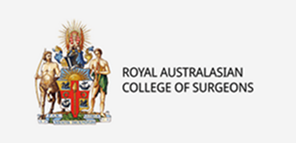- 0401 792 644

- 0401 792 644

Breast cancer surgery may involve the removal of some or all lymph nodes from the armpit (axilla). The axilla contains approximately 15–30 lymph nodes, and this number varies between individuals. About 30–35% of breast cancer patients will have cancer spread (metastasis) to these axillary lymph nodes. Removing these affected nodes is important both for treatment and for guiding further therapy, such as radiotherapy and chemotherapy.
In the past, complete axillary lymph node clearance (removal of all axillary nodes) was routinely performed. However, many of these procedures turned out to be unnecessary, as many patients had no cancer in their nodes. These surgeries carried increased risk and complications.
Today, the aim of lymph node surgery is to remove the smallest number of nodes needed to detect cancer spread and minimise complications. Determining which nodes are affected can only reliably be done through a surgical biopsy.
This technique allows surgeons to identify and remove only the lymph nodes most likely to contain cancer, called sentinel nodes. These are the first nodes to which cancer may spread. Sentinel nodes are located using a pre-operative mapping test (lymphoscintigraphy) at a nuclear medicine centre.
Although this mapping identifies the likely sentinel nodes, it does not determine whether cancer is present. Therefore, surgical removal (biopsy) of these nodes is necessary.
If cancer is found in the sentinel nodes, a full axillary clearance may be recommended. If not, no further lymph node surgery is typically needed.
SNB usually removes 1–3 lymph nodes from the axilla. In most patients, these nodes are in the armpit, but in some cases they are located near the breastbone (internal mammary lymph nodes). In some early-stage or low-risk cases, lymph node removal may not be required.
Occasionally, other lymph nodes may look suspicious during surgery and may be removed as well. This brings the total number of nodes removed to between 1 and 5 in most cases.
Some patients notice mild tenderness or firm cord-like structures under the arm after surgery; these typically resolve within 2–3 weeks.
There are gerally two ways of finding the sentinel nodes.
Dr Noushi typically uses both techniques together, but occasionally only one method is needed.
Sometimes, sentinel nodes are located near the sternum (breastbone). These are identified on the nuclear scan and marked on the skin.
If needed, Dr Noushi will biopsy these nodes. While this causes more discomfort and slightly increased risk, it helps guide treatment decisions. Rarely, bleeding or lung injury can occur, and in very rare cases a chest tube or further surgery may be required.
If cancer is found in the sentinel node, you may require a second surgery to remove the rest of the axillary nodes (axillary clearance). However, this decision is discussed at a multidisciplinary oncology meeting. Treatment plans are reviewed by a team of specialists, including surgeons, medical oncologists, and radiation oncologists.
Sometimes, if only a small amount of cancer is found and other treatments like radiotherapy are planned, full axillary clearance may not be necessary.
This involves removing all the lymph nodes in the armpit. A surgical drain is usually inserted and may remain for up to two weeks.
The main effects of this operation are that your shoulder is quite stiff for the first few days. A near full range of movement can be expected after 2–4 weeks with regular shoulder exercises, which you will be taught. Some patients experience an area of numbness in the upper arm area that can be permanent but often improves with time. Approximately 10–15% of patients develop a swelling in the arm (lymphoedema) that can be permanent but may improve with appropriate treatment.
Lymph node surgery adds about 30–60 minutes to the breast surgery. If only a few sentinel nodes are removed, this is often done through the breast incision. If full axillary clearance is needed, a separate armpit incision is made.
Dissolving stitches and waterproof dressings are used. You may shower with the dressing, but avoid rubbing or soaking it. The dressing is removed after one week.
Patients who undergo axillary clearance usually stay 2–3 nights in hospital and may go home with a drain. Community nurses will assist you at home and remove the drain when instructed by Dr Noushi.
You will begin shoulder exercises on day one post-op, gradually increasing over time. Most patients regain full shoulder movement within six weeks.
If you are having a mastectomy, lymph node removal is done through the same incision. In breast-conserving surgery, a separate armpit scar is made along the skin crease and usually fades well. Occasionally, a separate cut near the breastbone is needed for internal mammary node removal.
Early management is important. You will be taught arm massage and skin care. A compression sleeve may be used. Lymphoedema management is focused on symptom control and function.
While serious complications are rare, the following may occur:





Copyright © 2025. All rights reserved.